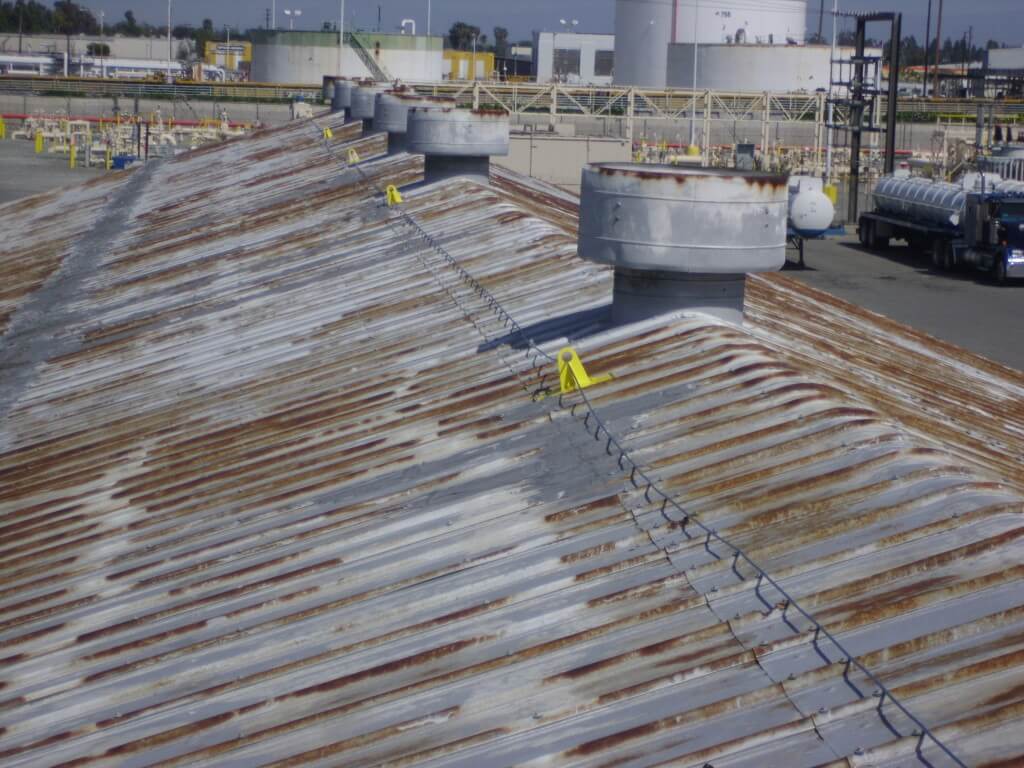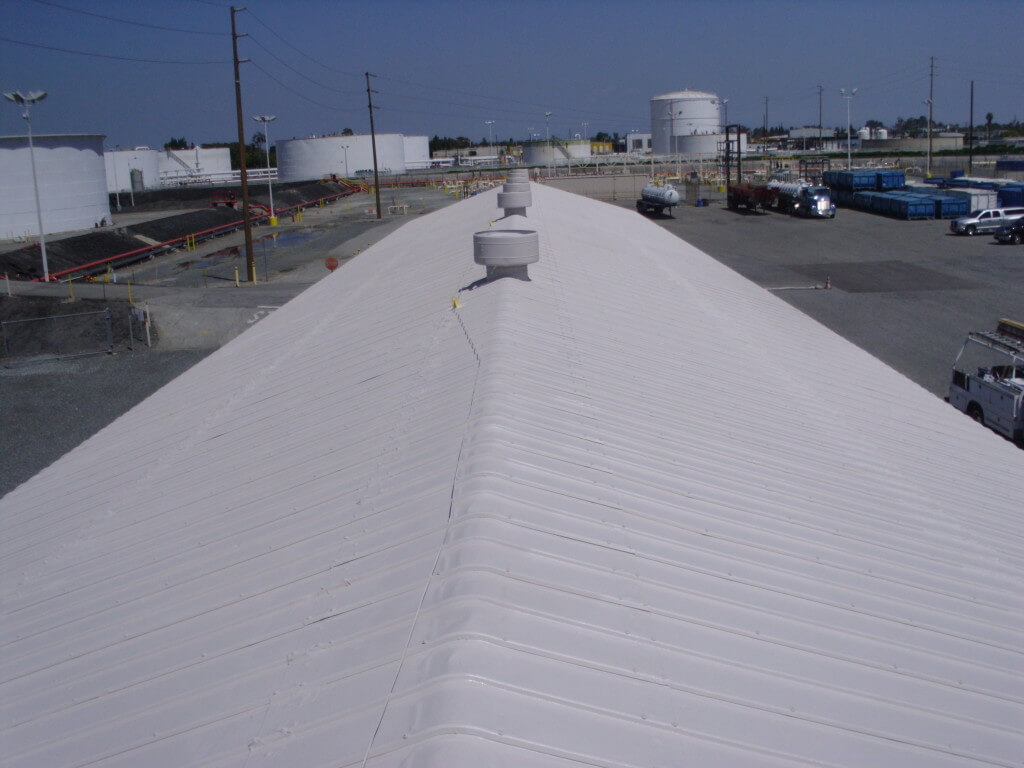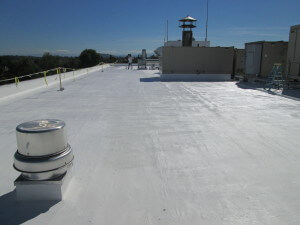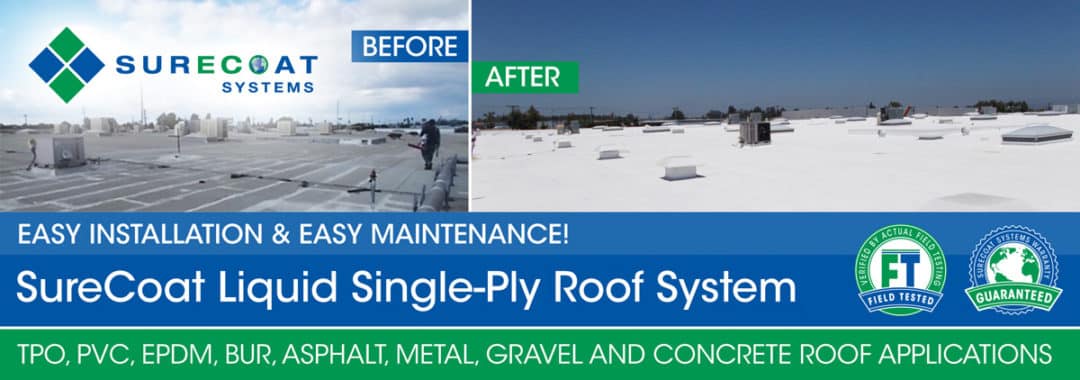
Got a Problem Roof? We can help you solve it!
We have proven seamless permanent roof repairs, roof maintenance and roof restoration solutions for all types of existing flat roof systems. Our flat roof coatings provide long-term UV resistance, unbeatable durability and leak-free waterproofing even under ponding water.
Repair or restore any existing FLAT ROOF even those with ponding water! The SureCoat Liquid Seamless Roof System is a single-component, epoxy enhanced hybrid roof coating system that was made for flat roofs with ponding water.
Our Flat and Low-Slope Roofing Experts are available at 877-823-7873 to support you for FREE. Call us today for recommendations, specifications, pricing or for an approved contractor in your area. Would you rather email? Contact us here and let us know how we can help you solve your roof problems.
• Seamless • Fully-Adhered • Waterproof • Elastomeric • UV Stable
The Latest in Single-Ply Roofing Technology!
The SureCoat Roof System is the only true Seamless Single-Ply roofing solution on the market today. The SureCoat Roof System consists of only one coating product that cures into a completely seamless, self-flashing, self-adhered, 100% waterproof, cool roof membrane that never needs to be replaced because it’s renewable!
Restoring with the SureCoat Roof System is far superior and more effective than roof replacement. The SureCoat Roof System can be applied over ANY existing roof system except silicone.
Leak-Free
Warranty Covers
Ponding Water!
Single-Ply Roof Before
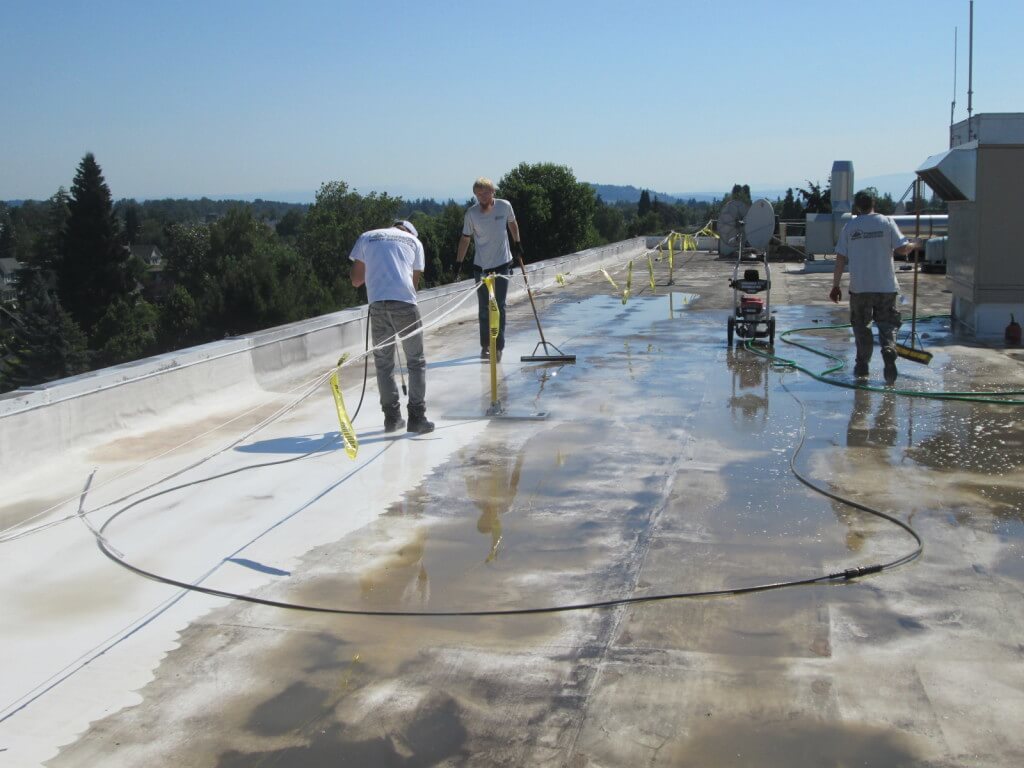
Single-Ply Roof After
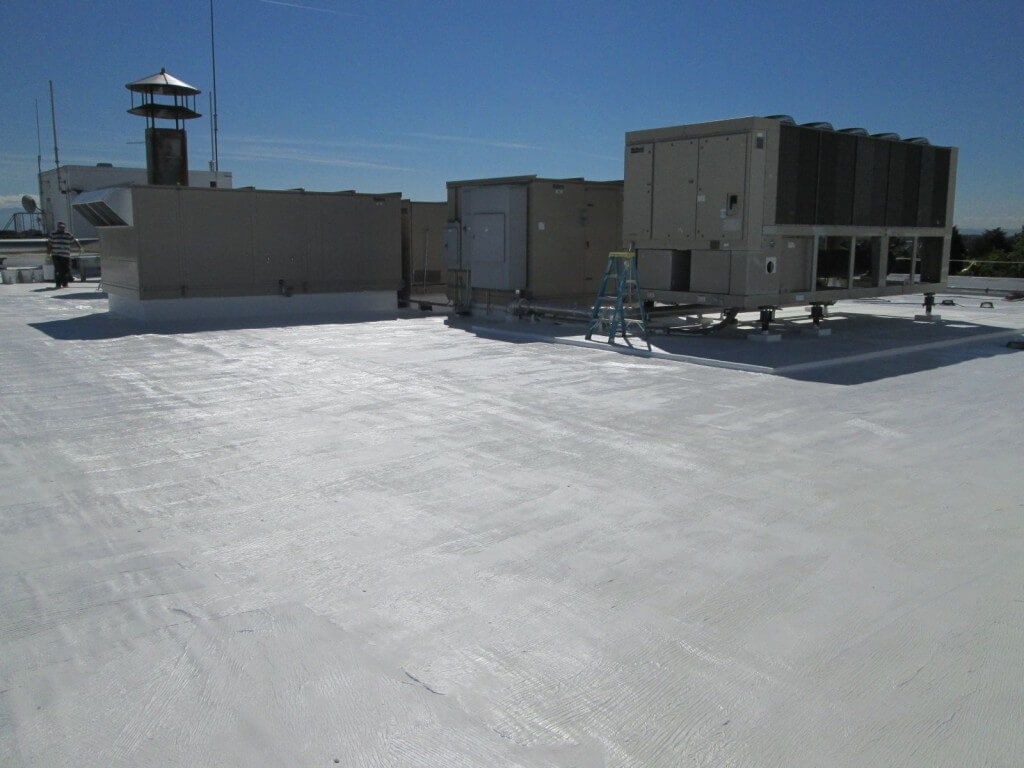
No Seams,
No Fasteners,
No Mastics!
Built-up Roof Before
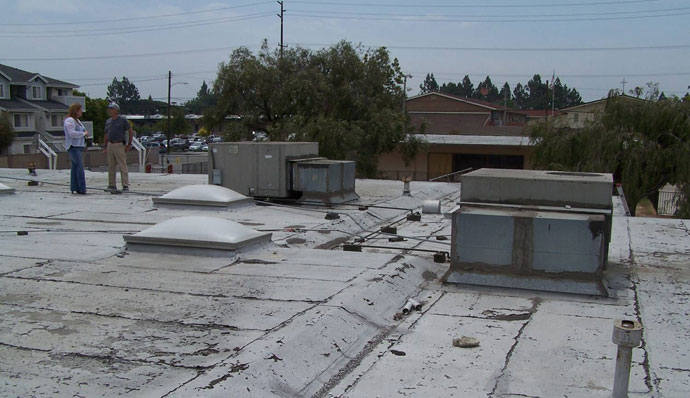
Built-up Roof After
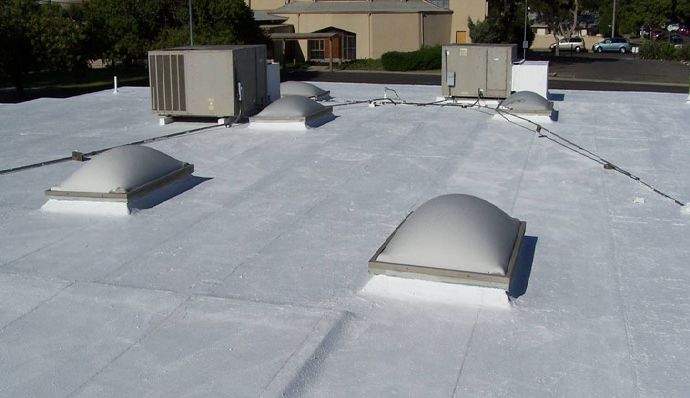
PVC Single-Ply Roof Systems
PVC (Polyvinyl Chloride) is a synthetic plastic polymer used in the manufacturing of several products including roof membranes. Per Wikipedia, PVC is the third most widely manufactured synthetic plastic. In the manufacturing of PVC roof membranes, plasticizers are added to the PVC to increase the flexibility of the plastic and increase elasticity. Plasticizers are additives meant to lower the cold-flex temperatures and increase the durability to PVC. Over time, these plasticizers evaporate or migrate out of the plastic. This process is accelerated when the PVC material is exposed to UV, heat and thermal cycles. As the plasticizers dry out of the PVC roof membrane, the roof loses its ability to move with the building and thermal cycling. The PVC roofing then becomes brittle, cracks and separates beginning at the seams and areas of heavy wear on the roof such as ponds, waterways and drains.
PVC roof membranes are single-ply roofing membranes that come in rolls and therefore have seams like rolled cap sheet. These roof membranes are generally anchored to the roof deck, creating holes in the roof deck where the single-ply material is bolted to the roof deck. As the roof, thermal cycles, expands and contracts, the fasteners come loose. As the solar reflectance declines, up to 20% every three years, the PVC becomes brittle and loses the ability to move. Seam separation and stress or fracture cracks can appear. It is not surprising that one pond on an aged PVC roof can feed dozens of leaks that are extremely difficult to pinpoint.
PVC, like other single-ply materials, requires special flashings at the penetrations and around equipment curbs. Seams are either heat welded or “glued down”. Some PVC used in cold climates has been known to stress-shatter causing hundreds of little star-like fractures in each sheet, leaving even more opportunity for water intrusion. When PVC reaches the end of its life cycle, it must be torn off and replaced like traditional roof materials. The old PVC ends up in landfills. PVC is made with 30% chlorine and is potentially hazardous to the environment and people. PVC can release dioxins. Dioxins are carcinogenic chemicals that can leach into the water tables. The SureCoat Roof System can be used over PVC roof membranes to extend their service life as well as encapsulate the existing roof and keep the roofing materials out of landfills.
TPO Single-Ply Roof Systems
TPO (Thermoplastic olefin) is a single-ply roofing material that is typically mechanically fastened to the roof substrate is held together with heat welded seams. TPO roofing has seams every few feet and special flashings. Solar reflectivity often decreases dramatically over time in TPO roofing membranes; the UV rays from the sun cause these roofing materials to break down and deteriorate. Several brands of bright white TPO roofing (and PVC roofing) have a solar reflectance that is reduced by 20-30% in just the first 3 years. This makes the TPO or PVC vulnerable to excessive exposure of these rays and premature deterioration. The expected overall life cycle is decreased by this premature deterioration. Seams begin to separate and water gets under the TPO sheet and runs along the roof deck until it finds a loose fastener. Leaks appear inside at one location but the water intrusion may begin in another area of the roof. TPO systems do not have a manufacturer’s warranty covering leaks caused by ponding water.
Hypalon Roof Systems
Hypalon is used in the construction of various products including roof membranes. Per Wikipedia, the online encyclopedia, Hypalon was a product of DuPont Performance Elastomers, a subsidiary of DuPont and noted for its resistance to chemicals, extreme temperatures and UV radiation. Hypalon is a trademark for chlorosulfonated polyethylene (CSPE) synthetic rubber (CSM). The Hypalon trademark has now become the common name for many types of CSM regardless of manufacturer.
Hypalon as a roofing material is a type of single-ply with similar installation methods, performance and weathering as PVC and TPO single-ply roof membranes.
Hypalon single-ply roofing membranes come manufactured in rolls like traditional asphalt rolled roofing and other single-ply roofing materials. These roof membranes are then anchored to the roof deck with special fasteners and adhesives.
As a Hypalon roof ages and thermal cycles, the fasteners begin to come loose and the seams begin to separate. This makes the roof vulnerable to roof leaks. Like most traditional single-ply roofing systems, as a Hypalon roof ages, maintenance is required to keep the roof in good operating condition.

